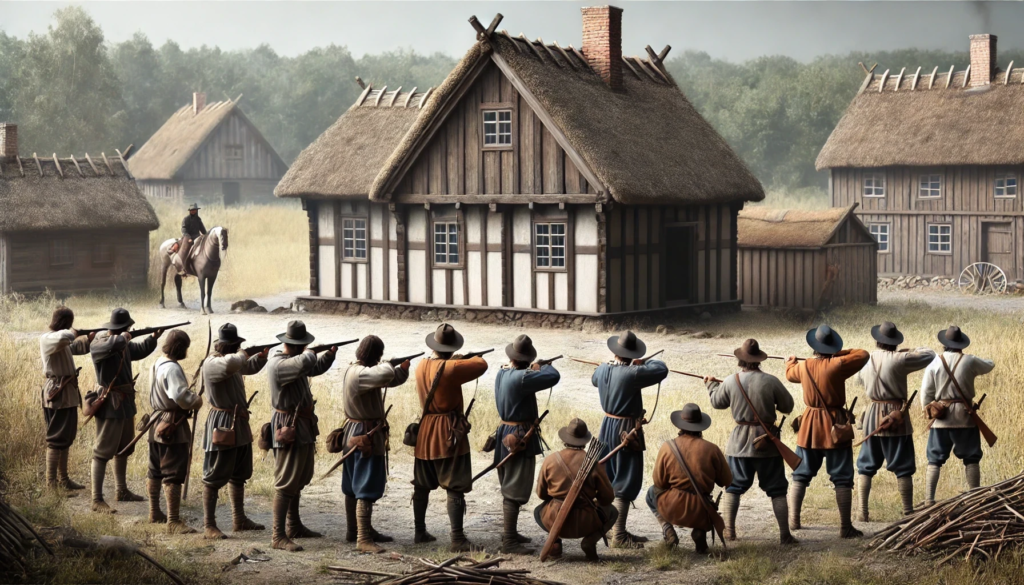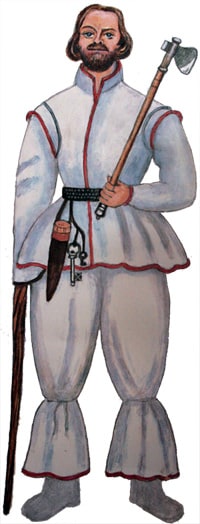The picture above is a reconstruction of Nils Dacke, a suggestion of what he might have actually looked like. It is based on what is said to be an contemporary image of him, painted originally in a cottage in Östergötland, Sweden, though the original is long gone.
But who was he, the man who led the most famous and successful peasants’ revolt in Swedish history?
It’s a very hard question to answer. For one, he was a commoner, we normally dont know so much about them and their backgrounds at this time. But also because the king, Gustav Vasa, was a master of propaganda.
He described Nils Dacke as a theif, heretic, traitor and a heathen. He also claimed that the rebellion was not a result of high taxation, but rather the fact that the peasants in the border regions with Denmark no longer were allowed to trade with the Danes.
The Smålanders were stingy, unpatriotic and selfish, accordning to the king. The perception that the people of Småland are stingy has lived on right up to the present day.
Nils Dacke has variously been described as a pauper or a rich farmer – depending on what kind of propaganda served the king’s purpose at the time. But what is actually true?
He came from a large peasant family, but he was hardly among the richest farmers, but rather lived as a tenant on various crofts. The fact that he was truely one of them probably made peasant follow him and respect him as their leader.

He was an excellent agitator, travelling from village to village, giving fiery speeches to the people inciting them to join the revolt.
The oppression and taxation aside, Nils Dacke and his extended family had yet another reason to hate the local bailiff, Nils Larsson. Not all of Dackes relatives had surrendered after the 1530’s revolt and had been killed or executed as a result. What would become the greatest peasant revolt ever i Swedish history thus started with personal revenge.
Around midsummer in 1542, Nils Dacke, his family and neighbours – around 30 people – set off towards the bailiff’s residence. When they arrived, Nils Larsson and the deputy bailiff Arvid Västgöte were taking a nap.

Dacke had the house surrounded, and called to the two men to come out and surrender, which they did. That didn’t save them though. After plundering the residence, the rebels shot them.
Dacke had had his revenge. But that wasn’t enough.
The company moved on to another estate, where a local noble – Gudmund Slatte – lived. He was old and sick, but the angry peasants still killed him.
This was not a random act of violence, but carefully planned. And once done, there was no return. Dacke and his company could choose to take to the woods and hide – or start a rebellion. They chose the latter.
Dacke began a tour of surrounding villages where he rallied the peasants and gave fiery speeches to urge them to join the rebellion. In just a couple of months, his forces grew to several thousand men.
The rebellion known as the Dacke War was about to begin…

Pictured above is the painting of Nils Dacke, said to be made from a lost original.
Sources:
Adolfsson, Mats. Fogdemakt och bondevrede. Svenska uppror: 1500 – 1718. (2007)
Blom, Tomas. Dackefejden. Det stora upproret. (2019)

